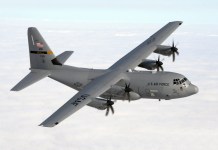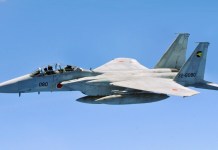A new, compact air-launched cruise missile intended for integration with the Korean KF-21 fighter was displayed at the Seoul International Aerospace & Defence Exhibition (ADEX) 2025.
The new missile is named KASOM (Korean Advanced Stand Off Missile) and is being developed by Taurus Systems, a joint venture between MBDA Deutschland and Saab Bofors Dynamics, which has developed the popular KEPD 350 ‘Taurus’ missile.
The manufacturer said that the KASOM is smaller than the KEPD 350, which is currently equipped on the F-15K fighters of the Republic of Korea Air Force (RoKAF).
A prototype of the missile was displayed at the exhibition that runs from October 17 to 24.
The KEPD-350 is a German-Swedish air-launched cruise missile developed by Taurus Systems GmbH. It is the same missile that Ukraine has been aggressively seeking from Germany to bolster its long-range strike capability.
South Korea is only the fourth country, besides Germany, Sweden, and Spain, to operate this coveted weapon system.
The report stated that the KASOM program is “an extension” of the earlier KEPD 350K-2, an all-weather missile offered to South Korea and other nations. The KEPD 350K-2, based on the KEPD 350K, was previously intended for the FA-50. Now, the KASOM is expected to be equipped on the FA-50 light attack aircraft and the stealth variant of the KF-21, the KF-21EX, which is currently under development.
首尔航展专业日展出的韩国造KEPD, TaurusKR公布的新导弹KASOM。 pic.twitter.com/lkdk7j1Dxv
— Sweet Clay (@Clay_PLAPAP) October 22, 2025
The KEPD 350K-2 was meant to address the size and weight constraints of the original KEPD 350K, which is too large for underwing hard points on light combat aircraft.
The KEPD 350K-2 was expected to weigh approximately 2,000 pounds and to have a range of 250 miles, as previously reported by EurAsian Times.
At the time, some experts predicted that the manufacturer could substitute the navigation and guidance systems, warheads, and turbofan engines in the Taurus KEPD 350K-2 with components produced in South Korea to evade the stringent export controls imposed by the German and US governments.
While there has been no update from official sources on the KEPD 350K-2 missile, some media reports published in January 2025 said that Taurus Systems was collaborating with Korea Aerospace Industries (KAI) to equip the FA-50 with the missile. The EurAsian Times could not independently verify these claims.
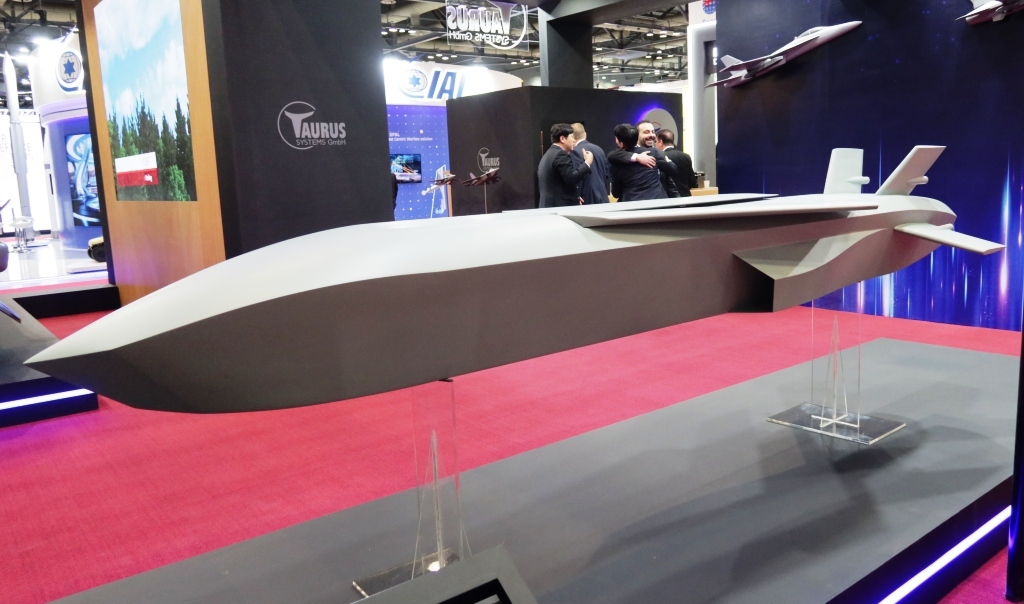
Though little is known about KASOM, the Janes report states that it will measure 4 meters in length, down from 5 meters of the original KEPD 350. According to a company brochure, this size reduction will also result in the missile weighing just about 970 kilograms, compared to the KEPD 350, which weighs 1,400 kilograms. The brochure also said that KASOM maintains the same top speed (Mach 0.6–0.95) as the KEPD 350.
According to some reports, the missile’s range would exceed 400 kilometres, but the guidance system would be the same as the KEPD-350, which includes a navigation suite comprising GNSS (Global Navigation Satellite System), IBN (Image-Based Navigation), and TRN (Terrain-Referenced Navigation).
The unveiling of this smaller KEPD 350 variant comes weeks after South Korea announced it was upgrading the KF-21 to the KF-21EX, or KF-21 Block III, variant, which will purportedly incorporate true fifth-generation stealth capabilities.
Last month, Korea Aerospace Industries (KAI) released concept artwork of the KF-21EX, prominently showing twin internal weapons bays with a pair of 2,000-pound (907 kilograms) guided bombs.
Since the South Korean Defense Acquisition Program Administration (DAPA) and KAI planned to eventually upgrade the KF-21 into a fifth-generation stealth fighter, the fighter jet’s airframe was pre-designed with space for these bays to limit structural changes.
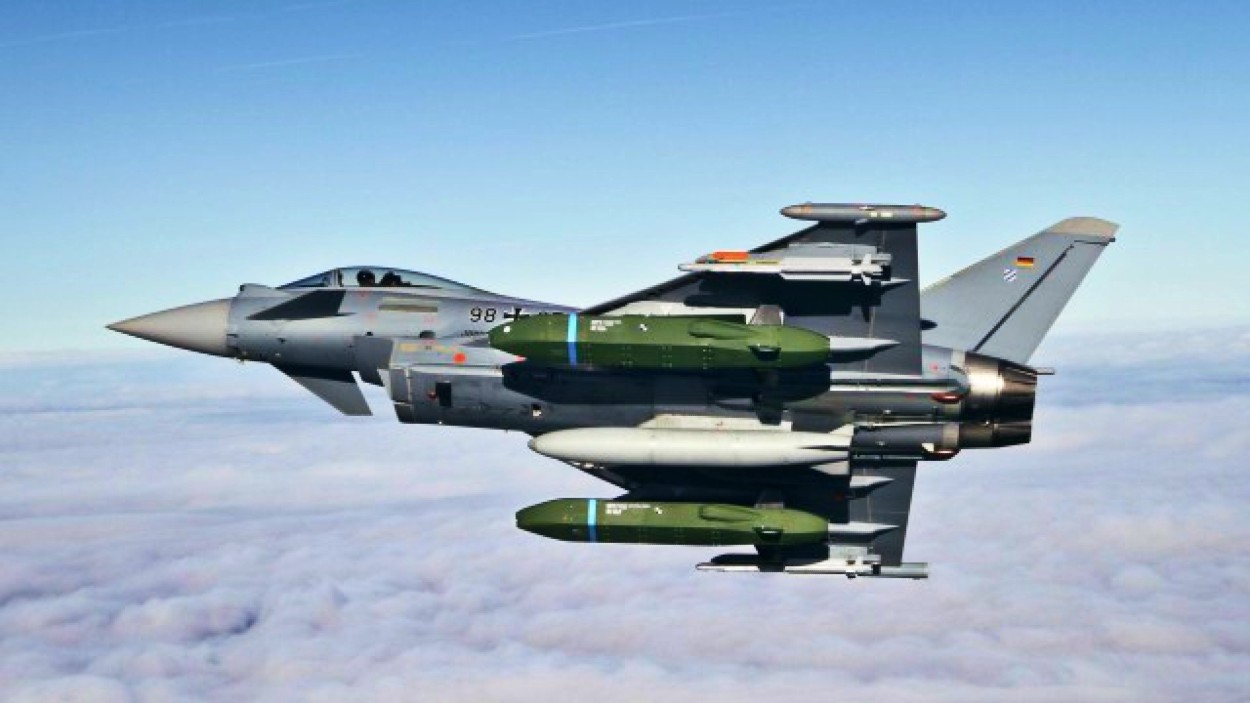
Carrying weapons internally would effectively reduce the radar cross-section (RCS), preserving the KF-21’s low observability compared to external mounts used for larger missiles like the KEPD 350.
This would allow the KF-21 to penetrate contested airspace with reduced risk of detection by enemy radar systems.
As previously explained by Indian Air Force veteran and military analyst Air Marshal Anil Chopra (retd), the ability for stealthy platforms to carry more internally is an indispensable need for modern air forces as the “one who controls the aerospace controls the planet.”
Notably, the Janes report stated, “KAI has not officially released specifications for the internal weapons bay of the future KF-21EX (Extended) fifth-generation variant. However, Janes understands that the size will be comparable to the dimensions of the weapons bay in the Lockheed Martin F-35A.”
It is pertinent to note that the Republic of Korea Air Force (RoKAF) already uses the KEPD-350K, a tailored variant installed on the F-15K Slam Eagle fighter jets. Thus, having a different variant of the same missile for its futuristic stealth fighter makes sense.
Based on publicly available information, it appears the KASOM could retain much of the KEPD 350’s capabilities while reducing size and weight for better integration with lighter fighters. It is an all-weather, day/night missile with stealth features, terrain-following flight, and advanced guidance for evading air defenses.
Notably, Several countries have focused on miniaturizing or adapting existing air-to-air missiles to fit within the constrained internal weapons bays of stealth fighters. For instance, China unveiled the PL-15E, a smaller version of the PL-15 missile for the internal stealth bay of its J-20 and J-35A fighter jets, as reported by the EurAsian Times at the time.
South Korea’s Stealth Capability In The Making
The KAI KF-21 multirole fighter jet, developed by Korea Aerospace Industries (KAI) in collaboration with Indonesia, has been classified as a 4.5-generation aircraft. However, KAI has consistently maintained that it is far ahead of other 4.5th-generation jets in capability and is only slightly short of being classified as a 5th-generation aircraft.
In line with that assertion, South Korea has now confirmed plans to upgrade the KF-21 through a phased “block” development model, culminating in Block III (also referred to as KF-21EX).
These upgrades are supported by South Korea’s 2026 defense budget, which allocates additional funding for stealth enhancements, indigenous engine development, integration with unmanned systems, and a host of other subsystems.
The goal of this effort is to create a cost-effective, export-competitive fifth-generation fighter that complements the Republic of Korea Air Force’s (ROKAF) existing F-35A fleet, while positioning South Korea as a new player in the global advanced fighter market.
The internal weapons carriage is designed to minimize the radar section’s area, as with other fighter jets, including the F-35. In fact, the EurAsian Times understands that the KF-21 upgrade appears to be an attempt to replicate common fifth-generation features found on the F-35, including a sensor beneath the nose that performs roles similar to the F-35’s Electro-Optical Targeting System (EOTS). It will also include new conformal antennas, a radome with a smaller radar cross-section, and a re-profiled canopy, among other modifications.
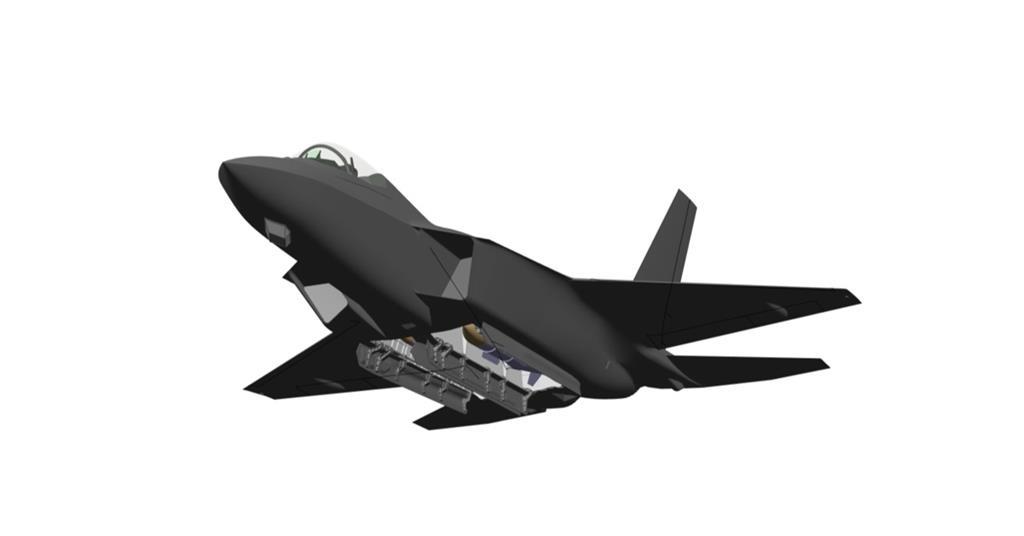
According to KAI, the jet would have unidentified “survivability technologies” and sophisticated situational awareness systems. The new, upgraded aircraft will feature an enhanced electronic warfare suite, and the Electronic Warfare (EW) sensors will be moved inside the fighter to reduce detection, according to reports.
Earlier reports suggested that the KAI was also developing long-range air-to-air missiles to be integrated into the Block III KF-21 stealth aircraft.
Moreover, a transition to a fully indigenous engine with potential low-observable nozzles to reduce infrared signature, supporting supercruise capability, and extending range are also on the cards. The new engine will replace the current GE F414-GE-400K that currently powers the existing iterations of the aircraft.
Additionally, the stealthy KF-21 will operate alongside loyal wingman drones in a manned-unmanned teaming (MUMT) configuration—an approach now being adopted by all advanced air forces. The modifications in this regard will include sensor fusion and secure datalinks to allow the crewed fighter to collaborate with the drones.
Once these planned upgrades are incorporated, South Korea will join an elite group of countries with its own indigenously developed fifth-generation stealth fighters.
The existing KEPD-350K is connected to Seoul’s ‘kill chain’ defense strategy, which is explicitly designed to swiftly eliminate North Korean command-and-control centers and fortified positions that house nuclear and conventional missile forces, all in the event of a potential conflict.
This means that integrating a compact KOSM will take this strategy further and significantly boost the firepower of the country’s first stealth fighter.
- Contact the author at sakshi.tiwari13 (at) outlook.com
- Follow EurAsian Times on Google News

